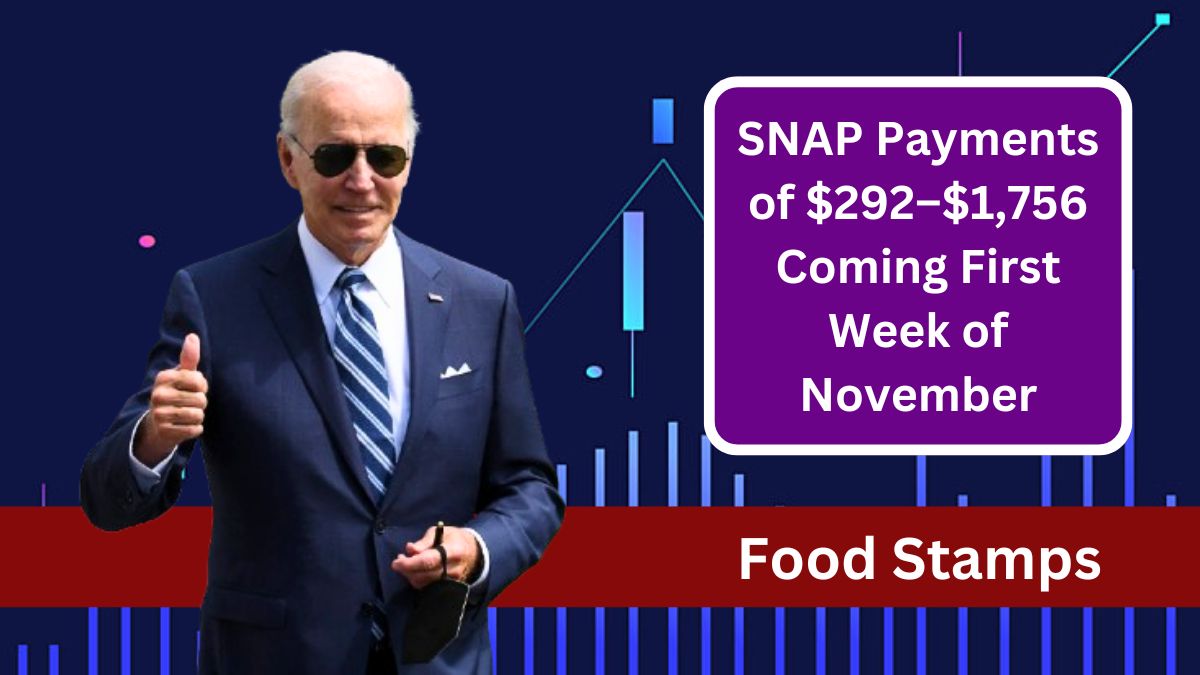With the beginning of November, some Supplemental Nutrition Assistance Program (SNAP) recipients are set to receive their first monthly benefits after the latest Food Stamps office approval. Notably, the maximum SNAP benefit amounts for 2024 include the 2025 cost-of-living adjustment (COLA), which provides a small increase to help offset inflation. This article outlines the November SNAP payment schedule, state-specific payday arrangements, and eligibility requirements to help new recipients understand their benefits.
SNAP Payment Adjustments
The 2025 COLA increase raised the average monthly benefit for single recipients. For example, an average single person can receive up to $199 per month, while the new maximum monthly benefit after the COLA increase is $292. However, most individuals will see only a slight increase, typically about $1 extra per month, after the COLA adjustment. While modest, this increase aims to help recipients cope with rising living costs.
November SNAP Payment
SNAP benefit schedules differ across states, with payment dates based on various criteria such as Social Security Numbers (SSNs), Eligibility Determination Group numbers, or even the first letters of recipients’ last names. Here’s a breakdown of November SNAP payment dates by state:
| State | November Payment Dates |
|---|---|
| Alabama | November 4 – 23 |
| Alaska | November 1 |
| Arizona | November 1 – 13 |
| Arkansas | November 4 – 13 |
| California | November 1 – 10 |
| Colorado | November 1 – 10 |
| Connecticut | November 1 – 3 |
| Delaware | November 2 – 23 |
| Florida | November 1 – 28 |
| Georgia | November 5 – 23 |
| Hawaii | November 3 – 5 |
| Idaho | November 1 – 10 |
| Illinois | November 1 – 10 |
| Indiana | November 5 – 23 |
| Iowa | November 1 – 10 |
| Kansas | November 1 – 10 |
| Kentucky | November 1 – 19 |
| Louisiana | November 1 – 23 |
| Maryland | November 4 – 23 |
| Massachusetts | November 1 – 14 |
| Michigan | November 3 – 21 |
| Minnesota | November 4 – 13 |
| Mississippi | November 4 – 21 |
| Missouri | November 1 – 22 |
| Montana | November 2 – 6 |
| Nebraska | November 1 – 5 |
| Nevada | November 1 – 10 |
| New Hampshire | November 5 |
| New Jersey | November 1 – 5 |
| New Mexico | November 1 – 20 |
| New York | November 1 – 9 |
| North Carolina | November 3 – 21 |
| North Dakota | November 1 |
| Ohio | November 2 – 20 |
| Oklahoma | November 1 – 10 |
| Oregon | November 1 – 9 |
| Pennsylvania | First 10 business days |
| Rhode Island | November 1 |
| South Carolina | November 1 – 10 |
| South Dakota | November 10 |
| Tennessee | November 1 – 20 |
| Texas | November 1 – 28 |
| Utah | November 5, 11, 15 |
| Vermont | November 1 |
| Virginia | November 1 – 7 |
| Washington | November 1 – 20 |
| West Virginia | November 1 – 9 |
| Wisconsin | November 1 – 15 |
| Wyoming | November 1 – 4 |
| Territories | |
| Guam | November 1 – 10 |
| Puerto Rico | November 4 – 22 |
| D.C. | November 1 – 10 |
| U.S. Virgin Islands | November 1 |
General SNAP Eligibility
To receive SNAP benefits, new applicants must meet specific financial and work-related criteria, and in some cases, they may qualify for expedited benefits if they have minimal resources on hand. Here’s a summary of basic eligibility requirements:
Income and Resource Limits
SNAP eligibility is based on income limits and resources:
- Countable Resources: Individuals may have up to $3,000 in countable resources, while households with a disabled member or seniors (aged 60+) can hold up to $4,500.
- Income: Income limits vary by household size and state. However, applicants must generally fall under state-specific income thresholds to qualify.
Work Requirements
For adults aged 18 to 54, SNAP requires a minimum of 80 work hours per month unless they qualify for an exemption. This requirement encourages self-sufficiency but includes exemptions for certain individuals facing challenges to work.
Expedited Benefits
Households with extremely low resources may qualify for expedited SNAP benefits. This expedited process is designed to assist those with almost no financial resources and can provide aid within the same month of approval.
For more detailed information about specific income requirements, exemptions, and other criteria, you can visit the official USDA SNAP Eligibility page.
November’s SNAP schedule reflects various eligibility timelines and state-specific paydays, helping recipients plan their monthly budget and access their benefits at predictable intervals. With the 2025 COLA adjustment in place, recipients can expect a slight increase in their benefits, though the change is minimal for most individuals. By understanding the SNAP payment schedule and general eligibility requirements, new recipients can make the most of their benefits and better manage their food budgets.
FAQs
When will I receive my SNAP payment in November?
SNAP payment dates vary by state; check state-specific dates above.
What is the COLA increase for 2025?
The COLA adjustment slightly raises SNAP benefits, adding about $1 for most.
Who qualifies for expedited SNAP benefits?
Households with minimal financial resources may qualify for faster approval.
Are SNAP payments distributed on weekends or holidays?
No, payments are arranged to avoid weekends and holidays.
What is the work requirement for SNAP eligibility?
Recipients aged 18-54 must work 80 hours/month unless exempt.











